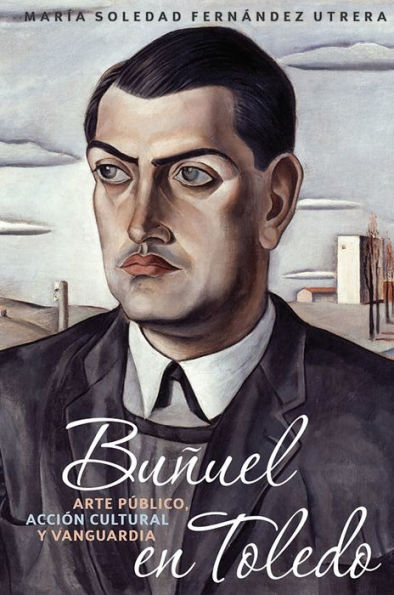Buñuel en Toledo: arte público, acción cultural y vanguardia
A close analysis of Buñuel's and the Order of Toledo's making of iconoclastic public art.
In 1923, Luis Buñuel established the Order of Toledo, a parody order of knights whose members included Salvador Dalí, García Lorca, and Rafael Alberti. Together, they often visited the ancient Spanish capital to stroll through itslabyrinthine streets. But these excursions on the part of Buñuel and the Brotherhood were more than simple episodes of cultural sightseeing; they were happenings, public interventions in space.
This book explores the anti-artistic aspect of these activities and urban perambulations. Are these practices similar to the flânerie of the Dadaists and French Surrealists? Taking into account their liberal, Spanish context, what was new about them, and what did they mean? Does their aesthetic experimentation make for ideological radicalism? And what impact do these first steps have on Buñuel's subsequent work and his later ideological trajectory?
María Soledad Fernández Utrera is Associate Professor of Spanish at The University of British Columbia.
1141386444
In 1923, Luis Buñuel established the Order of Toledo, a parody order of knights whose members included Salvador Dalí, García Lorca, and Rafael Alberti. Together, they often visited the ancient Spanish capital to stroll through itslabyrinthine streets. But these excursions on the part of Buñuel and the Brotherhood were more than simple episodes of cultural sightseeing; they were happenings, public interventions in space.
This book explores the anti-artistic aspect of these activities and urban perambulations. Are these practices similar to the flânerie of the Dadaists and French Surrealists? Taking into account their liberal, Spanish context, what was new about them, and what did they mean? Does their aesthetic experimentation make for ideological radicalism? And what impact do these first steps have on Buñuel's subsequent work and his later ideological trajectory?
María Soledad Fernández Utrera is Associate Professor of Spanish at The University of British Columbia.
Buñuel en Toledo: arte público, acción cultural y vanguardia
A close analysis of Buñuel's and the Order of Toledo's making of iconoclastic public art.
In 1923, Luis Buñuel established the Order of Toledo, a parody order of knights whose members included Salvador Dalí, García Lorca, and Rafael Alberti. Together, they often visited the ancient Spanish capital to stroll through itslabyrinthine streets. But these excursions on the part of Buñuel and the Brotherhood were more than simple episodes of cultural sightseeing; they were happenings, public interventions in space.
This book explores the anti-artistic aspect of these activities and urban perambulations. Are these practices similar to the flânerie of the Dadaists and French Surrealists? Taking into account their liberal, Spanish context, what was new about them, and what did they mean? Does their aesthetic experimentation make for ideological radicalism? And what impact do these first steps have on Buñuel's subsequent work and his later ideological trajectory?
María Soledad Fernández Utrera is Associate Professor of Spanish at The University of British Columbia.
In 1923, Luis Buñuel established the Order of Toledo, a parody order of knights whose members included Salvador Dalí, García Lorca, and Rafael Alberti. Together, they often visited the ancient Spanish capital to stroll through itslabyrinthine streets. But these excursions on the part of Buñuel and the Brotherhood were more than simple episodes of cultural sightseeing; they were happenings, public interventions in space.
This book explores the anti-artistic aspect of these activities and urban perambulations. Are these practices similar to the flânerie of the Dadaists and French Surrealists? Taking into account their liberal, Spanish context, what was new about them, and what did they mean? Does their aesthetic experimentation make for ideological radicalism? And what impact do these first steps have on Buñuel's subsequent work and his later ideological trajectory?
María Soledad Fernández Utrera is Associate Professor of Spanish at The University of British Columbia.
95.0
In Stock
5
1

Buñuel en Toledo: arte público, acción cultural y vanguardia
176
Buñuel en Toledo: arte público, acción cultural y vanguardia
176Hardcover
$95.00
95.0
In Stock

Product Details
| ISBN-13: | 9781855663039 |
|---|---|
| Publisher: | BOYDELL & BREWER INC |
| Publication date: | 06/16/2016 |
| Series: | ISSN , #357 |
| Pages: | 176 |
| Product dimensions: | 6.30(w) x 9.30(h) x 0.70(d) |
| Language: | Spanish |
From the B&N Reads Blog
